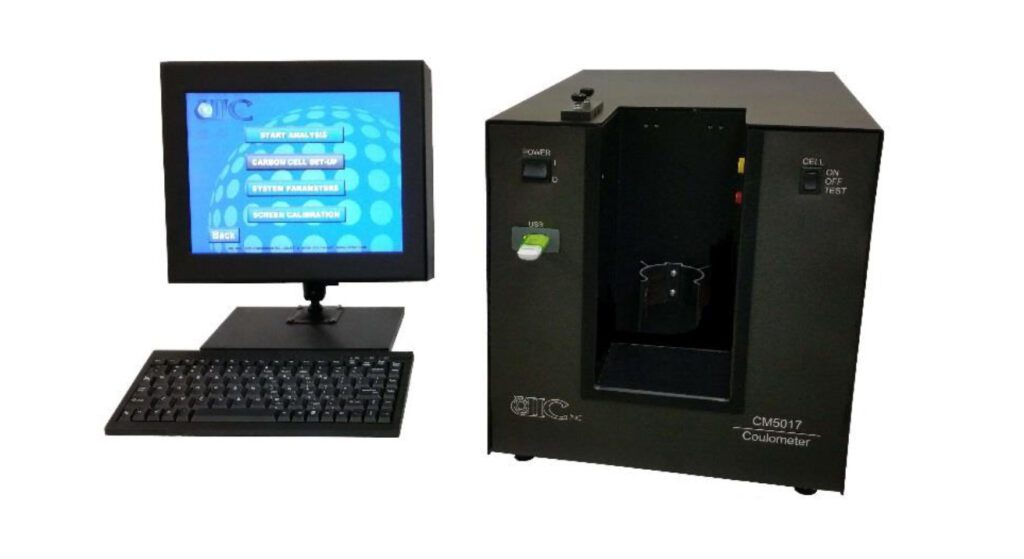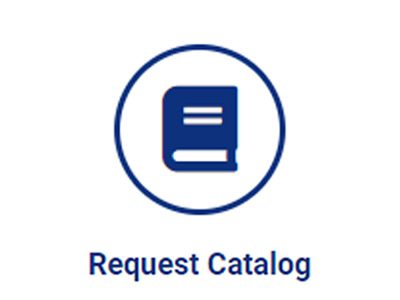SULFUR COULOMETER

The UIC, Inc. Sulfur Coulometer quantitatively titrates SO2 and H2S. Typical applications include the determination of total sulphur (by combustion) and the determination of SO2 and H2S (by acid evolution).
PRINCIPLES OF OPERATION
The coulometer cell is filled with a solution which initially contains a slight excess of free iodine. When SOsub>2 or other reducing substances enter the cell, iodine is consumed. The amperometric-sensing circuit detects the deficiency of iodine in the solution and causes iodine to be electrically generated at a rate proportional to the sensed deficiency. When all of the substance has been titrated, the iodine is restored to its initial concentration, and the quantity of the titration is read directly on the display in user-selectable units. Since the coulometric efficiency is 100 percent, sample calibration is not necessary. The linear range and accuracy of the coulometric technique exceeds that obtained by other detection methods.
EASE OF OPERATION
The amount of cell titrating solution used on daily basis is dependent upon the amount of sulphur in the samples analyzed. It can be changed on a daily basis, or as seldom as once every few days. The cell is ruggedly constructed and refilling the cell is a fast and simple operation. The S Coulometer is factory calibrated and does not require daily field or lab calibration. All peripherals are designed for ease of operation.
RATE AND RANGE
The range of the S Coulometer is from 0.01 micrograms to over 100 milligrams S. At its maximum rate (240 mA), the Coulometer can titrate 2,400 microgram S per minute. The proportioning circuitry allows for fast and accurate completion of the titration. The S Coulometer has an accuracy of .15% +/-2 digits for standard range.
INTERFERENCES
Any substance that reduces iodine will be determined by the Coulometer. Interfering substances are removed by scrubbing systems. Titration is normally used to determine SO2 or H2S, and the titration of either one involved a 2-electron transfer, giving the same titration in terms of quantity of S.
APPLICATIONS
- Total Sulfur – The S Coulometer can be used to detect SO2 from high temperature combustion sulphur analyzers. With most high temperature combustion units, only 70 – 90% S is converted to SO2. These systems must be calibrated for each sample matrix used to compensate for varying SO2 conversion efficiencies. UIC, Inc.’s S Coulometer does not need to be calibrated to compensate for varying conversion efficiencies.
The most desirable systems are those which quantitatively convert all S to SO2, taking advantage of the absolute determination provided by the Sulfur coulometer. Two approaches to this idea have been used:
- Combusting the sample in excess oxygen, followed by using an inert gas to pass the combustion products over metallic copper for removal of excess oxygen and quantitative conversion of S to SO2 before passing into the Coulometer.
- Mixing the sample with oxygen donors, such as vanadium pentoxide (V2O5) and manganese dioxide (MnO2), and using an inert carrier gas to pass the pyrolysis products over copper and into the S Coulometer.
In both of the above systems, sulphur is quantitatively converted to SO2, which is titrated by the S Coulometer, giving a direct readout.
(It is interesting to note the S Coulometer could be used to titrate H2S from hydrogenation, and the titration factor is the same as for the SO2 titration.)
- SO2 – SO2 in solid sulphites and in sulphite solutions have been determined using the UIC, Inc. Model 5330 Acidification Mosule as the sample handling peripheral. The sample is acidifed and an inert gas (N2) is used to transfer the SO2 from the reaction tube to the S Coulometer. This method provides high accuracy assays of sulphite chemicals, as well as sulphite/sulphide concentrations in various industrial and natural liquids.
- H2S – H2S in solids and solutions is analysed similarly to sulphites using the Model 5330 Acidification Module for sample handling. Although many applications require determining total SO2 and H2S, it is possible to separate the two gases such that the only one is determined by the S Coulometer.
ADVANTAGES
- Factory Calibration – does not require sample standardization or calibration
- Rapid analysis time
- User friendly
- Minimum maintenance
- High reliability
- High sensitivity




